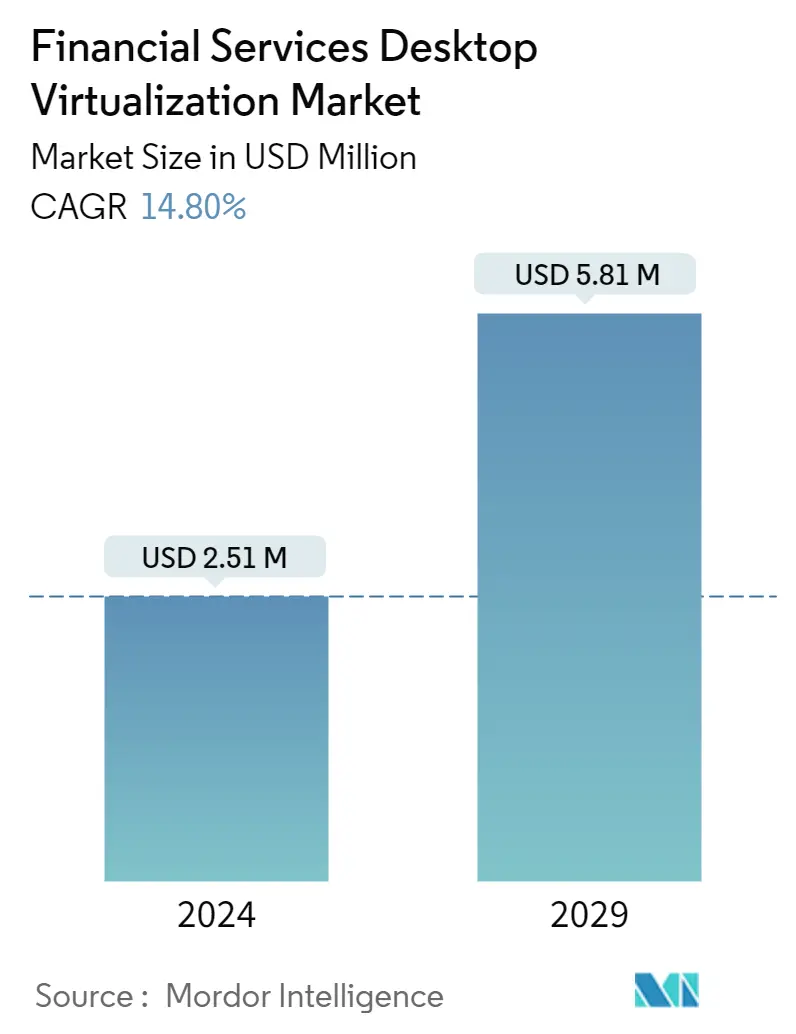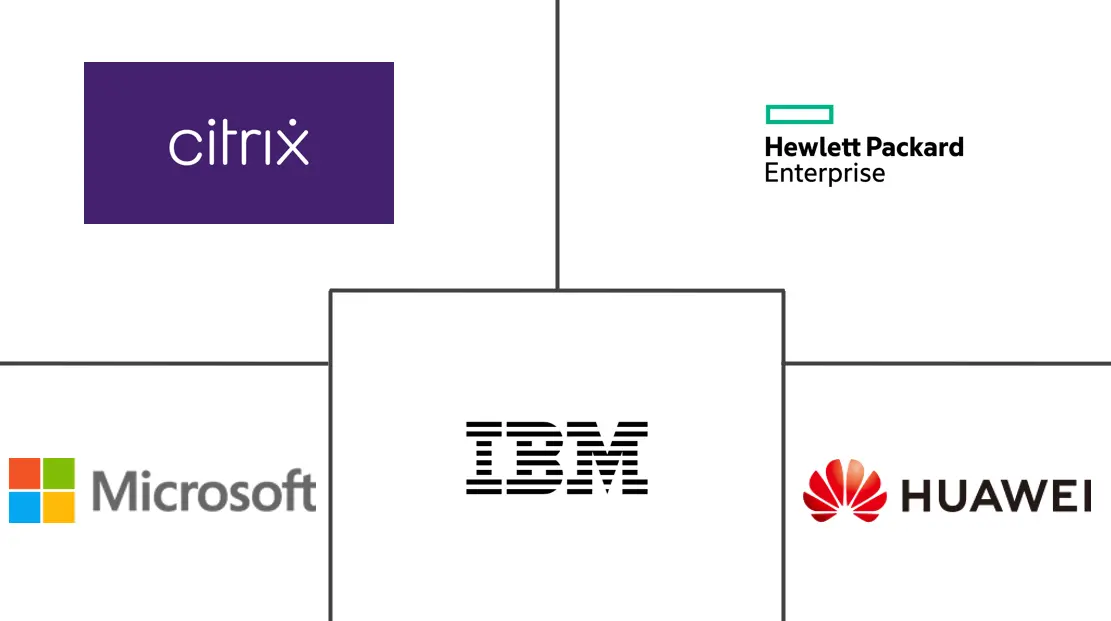Market Size of Financial Services Desktop Virtualization Industry

| Study Period | 2019 - 2029 |
| Market Size (2024) | USD 2.51 Million |
| Market Size (2029) | USD 5.81 Million |
| CAGR (2024 - 2029) | 14.80 % |
| Fastest Growing Market | Asia Pacific |
| Largest Market | North America |
Major Players
*Disclaimer: Major Players sorted in no particular order |
Need a report that reflects how COVID-19 has impacted this market and its growth?
Financial Services Desktop Virtualization Market Analysis
The Financial Services Desktop Virtualization Market size is estimated at USD 2.51 million in 2024, and is expected to reach USD 5.81 million by 2029, growing at a CAGR of 14.80% during the forecast period (2024-2029).
Enterprises are concentrating on working remotely to make their employees more effective and productive. Moreover, remote working and cloud processing could lower the cost of IT equipment. Clouds have evolved as an infrastructure, allowing for rapidly distributing processing resources as a service in a dynamically scalable and virtualized environment. The use of desktop virtualization is driven by higher cloud uptake rates and corporate preferences for implementing computers on the cloud.
- Financial organizations frequently have numerous user categories or personas. Each user identity requires a distinct computer desktop image within the organization. These characters include front-office and branch employees such as tellers, customer support reps, and knowledge workers.
- So, for many financial organizations, designing a high-performance, scalable, and cost-effective VDI infrastructure that can support these multiple FSI personas, as well as meet seasonal demand spikes, provide disaster recovery (DR), and respond quickly to unexpected regional and global events or disasters, is a real challenge.
- IT teams find that the design, deployment, configuration, and management of professional graphics VDI platforms for applications that have previously run on physical workstations is becoming increasingly difficult in view of changing workforce dynamics, rising demand for virtual infrastructures as well as a variety of user types within the FSI sector.
- Different organizations may have vastly different requirements in terms of the type of IT infrastructure that is best suited to their specific needs, which can range from hyper-converged infrastructure (HCI) to converged infrastructure (CI) to standard three-tier designs that can define and scale the compute and storage components on your own.
- Moreover, The rising adoption trends of desktop virtualization across various financial sectors drive market growth. Many banking organizations are moving away from the conventional PC path with the hard drive towards desktop virtualization. Financial institutions to make the transition frequently implement a Virtual Desktop Infrastructure (VDI). This server computing paradigm allows desktop virtualization and includes the hardware and software systems required to support the environment.
- Further, simplicity in management, measuring, and monitoring are a few factors driving desktop virtualization in financial services. Moreover, the enhanced data security benefits the firms in the increased adoption of virtualization. Virtual computers cannot be taken, abandoned, or physically compromised. A disconnected virtual desktop no longer appears at the distant site, closing the site's most vulnerable security gap: the computer itself.
- However, configuring and implementing desktop virtualization is challenging due to the numerous complexities and interoperability problems. Before adopting desktop virtualization solutions, it is essential to analyze the infrastructure needs, such as server capacity, network bandwidth, and workload. Several times, a user compromises on the necessary infrastructure configuration and attempts to implement a desktop virtualization solution on the current infrastructure, which may further hamper the effectiveness of the implemented solution. Furthermore, qualified workers are scarce in the industry.
- Further, the COVID-19 pandemic strengthened the demand for financial services companies to move their virtual desktop networks (VDIs) to the cloud.
